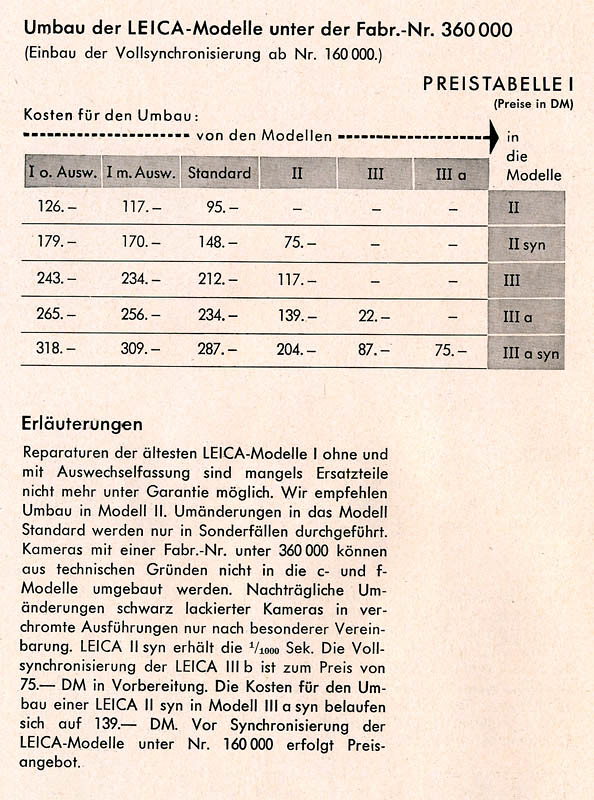from the 1930's to the 70's or so, the Leica factory offered "upgrades" from older to new Leica screw mount models.
Show Yours!
Stephen
Show Yours!
Stephen

All 1950's conversions have the "GmbH" marked top plate.

Maybe this suits your needs.
This document makes clear that another reason for a conversion was that repair of the oldest cameras could no longer be undertaken under warranty! But the camera's could still be converted.
Also there's a very strange note that a conversion from an original black camera into a chrome one was only possible under special conditions! Strange, because black parts were more expensive to produce than chrome ones.
regards,
Erik.

